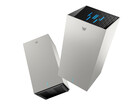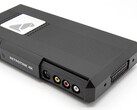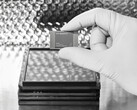Work on the Wi-Fi 7 standard will be completed by the Wi-Fi Alliance in the first quarter of 2024, according to a new subpage of the Alliance via Linkedin. This had already been hinted at in the Beacon blog at the end of October, albeit with some small print to water down the statements.
The "Wi-Fi CERTIFIED 7" program, as it is officially called, will be based on 802.11be. Certified hardware will be particularly important for interoperability between devices, be it WLAN routers, notebooks or smartphones with a Wi-Fi 7 radio unit.
Wi-Fi 7 brings three major innovations in particular. Broad 320 MHz channels will be permitted. How useful this is, however, will depend on the region. Not every country allows full use of the 6 GHz band introduced by Wi-Fi 6E. Whether the the upper range will be available in Europe is still unclear.
The bandwidth is also likely to be increased with 4K QAM (4096-QAM), i.e. the maximum number of constellation points that can be arranged in a digital packet. In Wi-Fi 6 this is still 1024 QAM. This will enable a 20% data rate increase in Wi-Fi 7 (802.11be) at best.
Multi Link Operation (MLO) is intended to offer further bandwidth and redundancy advantages, and will allow the three radio bands to be interconnected. Devices can thus transmit on several bands simultaneously and distribute their data, which is roughly comparable to carrier aggregation in mobile communications.
To what extent Wi-Fi 7 devices already on the market comply with the actual standard is a big, yet unanswered question. Some in the market fear a situation similar to that surrounding the 802.11n standard, where a number of manufacturers rushed into the market with "draft n" devices. Years before the standard was actually adopted.
At that time, the network manufacturers were nevertheless relatively transparent about the draft situation and at least highlighted the issue via the word 'draft'. However, the number of Wi-Fi 7 routers that have actually reached the market so far is negligible. They are also often very expensive. A firmware update should resolve any potential issues that may arise.
Like Notebookcheck.com, the Wi-Fi Alliance will be present at the CES in Las Vegas in January. We can thus expect to see numerous new launches in the field of WLAN hardware.

















